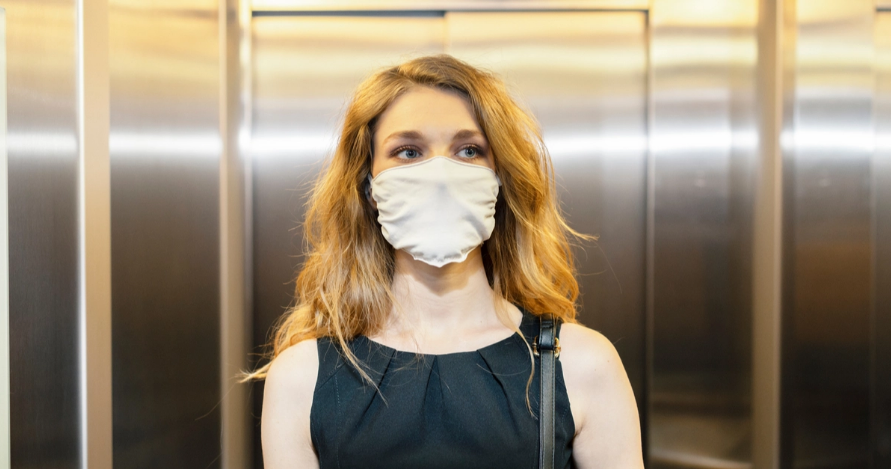In their paper published in Physics of Fluids on 26 January 2021, Medical School Professor Dimitrios Drikakis and Dr Talib Dbouk, show that while air purifiers would be expected to help, they may actually increase the spread of airborne viruses.
Air quality in small spaces can quickly degrade without ventilation. However, adding ventilation will increase the rate at which air, possibly laden with viruses, can circulate in the small space. Elevator manufacturers have added air purifiers to take care of this problem, but the systems have not been designed to account for their effect on overall air circulation.
Air purifiers use ultraviolet radiation to kill viruses and other microbes, but they also circulate air, sucking it in and exhausting cleaned air. This adds to overall circulation, an aspect that has not been considered in previous research.
Their previous work indicated that droplets of saliva can travel 6 metres in five seconds when an unmasked person coughs. The authors extended the same model to examine the effects of face masks and weather conditions, incorporating their findings into their epidemiological models along the way.
This new work involved conducting calculations for a 3D space equivalent to an elevator capable of holding five people. A mild cough was simulated at one position in the space, and air inlets and outlets were added in various locations to study their influence on circulation. An air purifier was also included in the simulation.
“We quantified the effect of air circulation on airborne virus transmission and showed that installing an air purifier inside an elevator alters the air circulation significantly but does not eliminate airborne transmission”, noted author Dimitris Drikakis.
Indeed, the investigators found the risk of airborne virus transmission is lowest for low ventilation rates. “This is due to reduced flow mixing inside the elevator”, explained author Talib Dbouk. “Regulatory authorities should thus define the minimum ventilation required depending on the type of building”.
The present study looked at the role of an air purifier, considering only the air intake and exhaust associated with the purifier, but not the mechanism inside the purifier that kills the virus. However, the researchers concluded that even with an air purifier in place, airborne virus transmission is still significant.
“Our results show that installing an air purifier may increase the droplet spread”, remarked Drikakis. “The air intake integrated inside the purifier equipment induces flow circulation that can add to the transport of contaminated saliva droplets in the cabin”.
The observed effect is compounded by the number of infected persons in the elevator. Restricting the number of people allowed in an elevator would therefore minimize the spread of the virus. At the same time, the present findings would be extremely helpful when considering future (re)designs of air purifiers and ventilation systems.
Read the full article here

